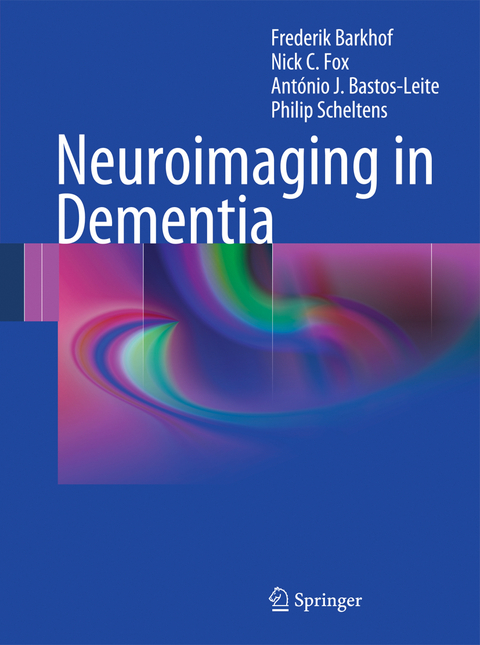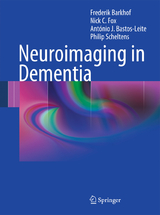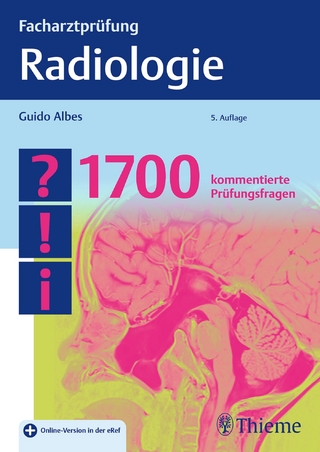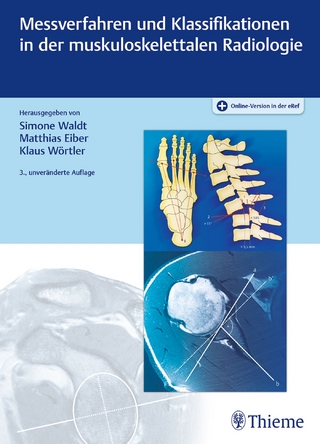Neuroimaging in Dementia
Springer Berlin (Verlag)
978-3-642-00817-7 (ISBN)
This up-to-date, superbly illustrated book is a practical guide to the effective use of neuroimaging in the patient with cognitive decline. It sets out the key clinical and imaging features of the various causes of dementia and directs the reader from clinical presentation to neuroimaging and on to an accurate diagnosis whenever possible. After an introductory chapter on the clinical background, the available "toolbox" of structural and functional neuroimaging techniques is reviewed in detail, including CT, MRI and advanced MR techniques, SPECT and PET, and image analysis methods. The imaging findings in normal ageing are then discussed, followed by a series of chapters that carefully present and analyze the key findings in patients with dementias. Throughout, a practical approach is adopted, geared specifically to the needs of clinicians (neurologists, radiologists, psychiatrists, geriatricians) working in the field of dementia, for whom this book will prove an invaluable resource.
Clinical background: Definition of dementia. Prevalence and incidence. Nosological approach. Differential diagnosis. Multi-disciplinary integration.- The toolbox: Structural imaging. Feature extraction. Advanced MR techniques. SPECT and PET.- Normal Ageing: Brain volume loss. Enlarged perivascular (Virchow-Robin) spaces and lacunes. Age-related white matter changes. Iron accumulation. Hidden age-related changes in brain tissue.- Primary gray matter loss: Alzheimer's disease. Frontotemporal lobar degeneration. Dementia with Parkinsonism. Dementia in other movement disorders. Prion-linked dementias. Recreational drugs and alcohol.- Vascular Disease: history and nosology. Large vessel vascular dementia. Small vessel vascular dementia. Vasculitis. Systemic hypoxia. Mixed dementia and interrelationship VaD/AD.- Disorders mainly affecting white matter: Infections. Inflammatory disorders. Inborn errors of metabolism. Toxic leukencephalopathy and dementia. Post-therapy effect. Trauma.- Dementias with associated brain swelling. Giant VRS. Infections. Neoplastic disease and radiation necrosis. Auto-immune limbic encephalitis. Normal pressure hydrocephalus (NPH). Arteriovenous malformation (AVM) and fistula (AVF). Reversible posterior leukencephalopathy (RPLS). Anti-amyloid therapy.
From the reviews:
"This is an excellent, comprehensive first edition book on practical use of neuroimaging in dementia. ... Everyday language with use of diagrams, flow charts and coloured text boxes highlighting 'take home' information gives the feeling of listening to a good lecture ... . I thoroughly recommend this book to all radiologists, senior radiology trainees and clinicians with an interest in dementia. With the current interest in dementia and the increasing use of imaging, this would be essential reading to all radiologists." (Ravi V. Jampana, Neuroradiology, Vol. 54 (4), April, 2012)
"This book is devoted to magnetic resonance imaging (MRI) findings as the key-factor in diagnosing people affected by dementia; a many-faceted condition. ... To help the reader, tables and boxes encompassing the most relevant points are frequently presented throughout the text. This book is more than informative, and will be appreciated by neuroradiologists, clinicians, neurologists and psychiatrists as well as by those emergency radiology room colleagues who might be confronted for the first time by an ageing patient with possible or evident dementia clinical signs." (G. Beluffi, La Radiologia Medica, Vol. 117, 2012)
"A book where neuroimaging is strictly connected with the clinical information. ... The book is divided into 8 chapters ... and is filled with illustrative images of good quality. ... is certainly interesting for a large series of readers with main reference to two categories: the professionals in neuroimaging, including nuclear physicians and neuroradiologists, and the clinical experts in cerebral diseases with main reference to neurologists, psychiatrists and geriatricians." (Luigi Mansi and Francesca Coppola, European Journal of Nuclear Medicine and Molecular Imaging, Vol. 39, 2012)
"The book categorizes diseases into four main groups by dominant imaging patterns visible by magnetic resonanceimaging (MRI): grey matter loss, vascular dementia, white matter disorder, and brain swelling. ... Then it shows full-color examples ... of the scans that typify progression of the disease: MRI, single photon emission computed tomography (SPECT), and positron emission tomography (PET), among them. ... 'Beautifully illustrated and well-balanced, its intelligent design contains the collective wisdom of a team of internationally acclaimed cognitive and neurologists and neuroradiologists.'" (Gwyneth Dickey Zakaib, Alzheimer Research Forum, July, 2011)
"Neuroimaging in Dementia is an excellent textbook on the clinical applications of neuroimaging in a variety of dementia disorders. ... it is a clinical guide. ... Overall, this is an outstanding textbook, providing many examples of the uses of neuroimaging techniques in the clinical assessment of dementia. The clinical approach and algorithms make this a unique book for radiologists, geriatricians, neurologists, and psychiatrists, who will continue to rely heavily on these neuroimaging techniques in the assessment and management of their patients." (Andrew Newberg, The Lancet Neurology, Vol. 10, June, 2011)
| Erscheint lt. Verlag | 23.2.2011 |
|---|---|
| Zusatzinfo | XIX, 278 p. |
| Verlagsort | Berlin |
| Sprache | englisch |
| Maße | 193 x 260 mm |
| Gewicht | 1070 g |
| Themenwelt | Medizinische Fachgebiete ► Radiologie / Bildgebende Verfahren ► Radiologie |
| Schlagworte | Alzheimer's disease • Bildgebende Verfahren (Medizin) • dementia • Demenz • Magnetic Resonance Imaging • PET • SPECT |
| ISBN-10 | 3-642-00817-8 / 3642008178 |
| ISBN-13 | 978-3-642-00817-7 / 9783642008177 |
| Zustand | Neuware |
| Haben Sie eine Frage zum Produkt? |
aus dem Bereich




